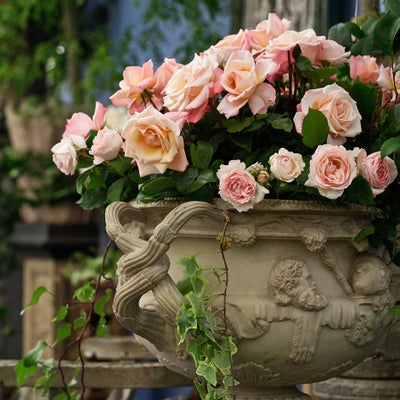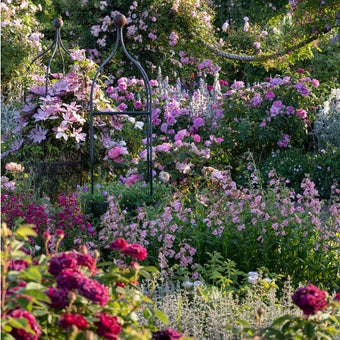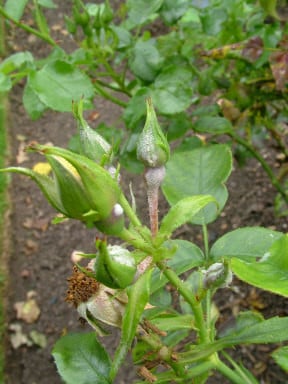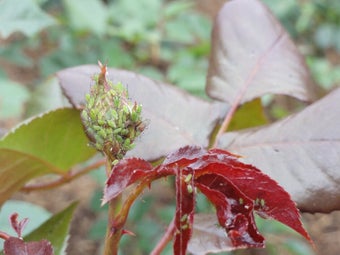
Quick facts
Top 5 roses for containers:
R. Nice Day (patio climber)
R. Sweet Dream (patio, also suitable as a standard)
R. Magic Carpet (groundcover)
R. Laura Ford (patio climber)
R. Robin Redbreast (miniature or ground cover)
Introduction
Only a few roses are tolerant of being grown in containers, as roses generally have long shallow roots for anchoring the plant and searching out moisture and nutrients. As long as deep containers are chosen, a good show of blooms should be achieved.
The best roses for growing in containers are the patio and miniature types, which can be grown in fairly small but deep pots 23-35cm (9-14in) deep. You could also try growing less vigorous, more compact ground cover and climbing roses, but use larger containers with a minimum depth of 30-45cm (12-18in).
Practical considerations
Container cultivation
The best to use is a peat-free compost for (such as peat-free John Innes No 3). Position the container before filling with compost as it may be too heavy to move once planted up.
Roses love sunshine and should receive sun for at least half the day. However it is important that container-grown plants do not dry out or they will become prone to . If possible position the container so that it is shaded for part of the day, leaving the plant itself in full sun.
Ideally pot up plants in November using plants, but container-grown plants will do as well, and can be potted up any time between October and April.
Aftercare
- Feeding: Roses use up food reserves quickly and grow better if top-dressed each spring with a granular rose fertiliser. Additional feeding may be required as per the manufacturer's recommendations. Avoid feeding after August as soft growth may be damaged by cold winters
- : with a 5cm (2in) top-dressing of well-rotted garden compost or manure to help retain moisture and enrich the compost
- Top-dressing: Every second year, remove the top 5cm (2in) of compost and replace with a fresh layer
Pruning requirements
For pruning roses, see below;
Rose pruning: climbers
Rose pruning: ramblers
Rose pruning: patio and miniature roses
Rose pruning: ground cover roses
Rose pruning: general tips
Rose pruning: shrub roses
Rose pruning: floribunda and hybrid tea
Mulches and mulching
Suitable roses
Patio and miniature shrub roses have been bred with container cultivation in mind. There is even a range of miniature patio climbers, reaching a height of about 2m (6½ ft). Some varieties of ground cover roses and climbers are also less vigorous and more compact. Half standards (roses on a trunk), reaching a height of about 1.5m (5ft) can be used for a formal effect.
Miniature and patio roses
- R. Anna Ford = 'Harpiccolo' AGM
- R. Regensberg = 'Macyoumis'
- R. Sweet Dream = 'Fryminicot' AGM. Also suitable as a standard
Standards
- R. Queen Mother = 'Korquemu' AGM
- R. Robin Redbreast = 'Interrob'
Climbers and ramblers
- R. Laura Ford = 'Chewarvel' AGM (climber)
- R. Nice Day = 'Chewsea' AGM (climber)
- R. 'Phyllis Bide' AGM (rambler)
Ground cover
- R. Berkshire = 'Korpinka' AGM
- R. Magic Carpet = 'Jaclover' AGM






